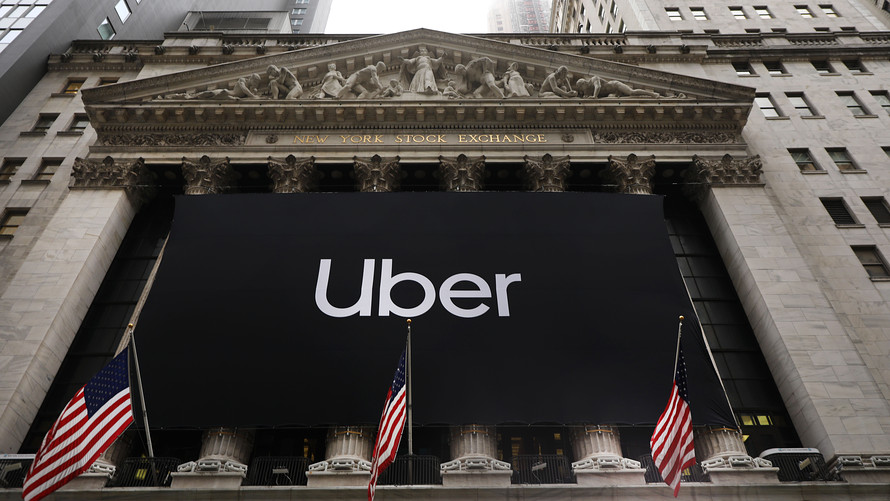$ 5.2 billion loss. That is the loss that Uber suffered in the last quarter. Nevertheless, the company has a market capitalization of 50 billion dollars (Uber, 2019). How is it possible that a company with such high losses can be worth so much?
In the past, the value of a company was estimated based on the discounted future cash flows. However, this is becoming increasingly difficult with the emergence of new technology companies recording high losses. This is due to the fact that many of the new technology companies are not looking for quick profits, but for user base growth to achieve economies of scale. Uber is a prime example of this scenario, the company incurs large losses every quarter, but is growing their user base remarkably fast with the use of network effects. In the case of network effects the two groups on a platform are attracted to each other. Uber benefits from two sided network effects, in which the platform’s value to any given user largely depends on the number of users on the network’s other side. Eventually margins will improve as users will pay more for access to a bigger network (Eisenmann, Parker, & Van Alstyne, 2006). Even though this all sounds great in theory there is still a lot of disagreement about the value of Uber. The CEO of Uber compares itself with Amazon, a company that also didn’t make a profit for many of its early years. Stating that there are many ways to profitability for Uber in which some are more attractive than others, such as autonomous driving, freight transportation and the delivery industry (‘Uber’s Khosrowshahi Sees Path to Profitability Despite Bumps in the Road’, 2019).
With the emergence of many such companies, new ways of evaluating these companies are being found. A famous finance professor, Aswath Damodaran, has done research into this subject and claims that many of the old finance techniques can still be applied to companies such as Uber, Netflix and Amazon. However, it is important for companies to add their total customer numbers to their financial reporting to correctly value the business. In this new valuation method the business value is estimated based on the discounted cash flows per user and the costs associated with obtaining an extra user (Damodaran, 2018).
Although nobody knows how Uber will eventually find its way to profitability, it has at least turned the transportation business upside down. Furthermore, new techniques are found to evaluate these disruptive and fast-growing companies, which creates new challenges in the financial world.
References
Damodaran, A. (2018). Going to Pieces: Valuing Users, Subscribers and Customers. Subscribers and Customers (May 23, 2018).
Eisenmann, T. R., Parker, G., & Van Alstyne, M. W. (2006). Strategies for two sided markets. Harvard Business Review, Vol. October.
Uber. (2019). Quarterly report 2019. Retrieved from
https://www.sec.gov/ix?doc=/Archives/edgar/data/1543151/000154315119000009/fy2019q2financialstate.htm
Uber’s Khosrowshahi Sees Path to Profitability Despite Bumps in the Road. (2019, August 29). Retrieved from
https://www.bloomberg.com/news/videos/2019-08-29/uber-s-khosrowshahi-sees-path-to-profitability-despite-bumps-in-the-road-video


A clear explanation on the new financial valuation method of the two-sided markets, resonating with the recent class session on network effects. And it’s also very interesting to see that many of the old economics/finance rules still apply, but in slightly different ways, resulting in changes in either pricing strategy or valuation method. By taking into account the user base of the company, the valuation goes from discounted future cash flows to discounted cash flows per user, reflecting the presence of network effects.